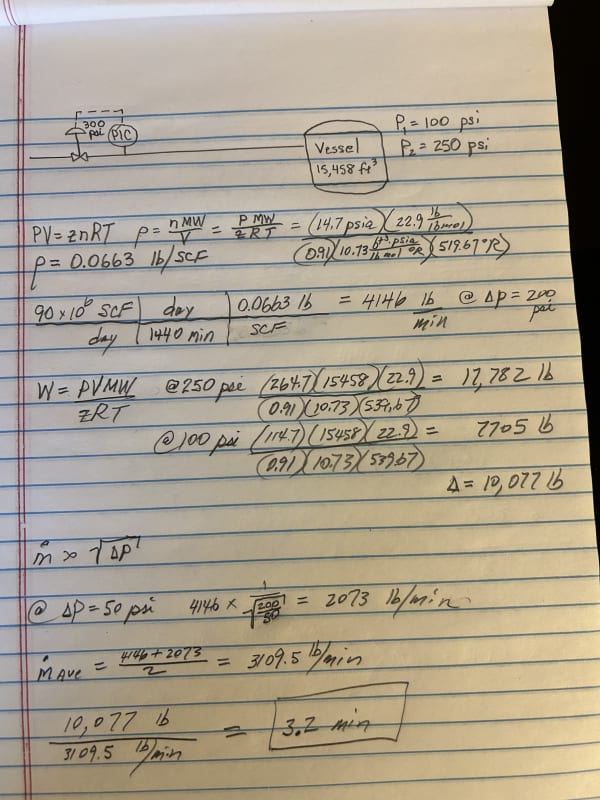"Hello community,
I'm currently facing a challenging situation and would greatly appreciate some expert advice. Here's the scenario:
I have a fixed volume vessel with a total volume of 15458 ft³. The volumetric flow rate through this volume is 90 MMSCFD. The initial temperature of the gas is 80°F, with a Compressibility Factor of approximately 0.91 and a Molecular Weight of 22.9. The source pressure is 300 PSIG, and the normal operating pressure is 100 PSIG.
My concern is understanding the time it would take for the pressure to reach 250 PSIG if the exit of the vessel were to be suddenly shut. Assume no heat transfer and no additional information on piping dimensions.
I'm reaching out to this knowledgeable community for assistance in calculating this pressure buildup time. Any insights, formulas, or guidance on how to approach this problem would be immensely helpful.
Your expertise is highly valued, and I'm eager to hear your thoughts on this matter. Thank you in advance for your time and assistance!"
Feel free to make any adjustments or let me know if you have specific preferences!
I'm currently facing a challenging situation and would greatly appreciate some expert advice. Here's the scenario:
I have a fixed volume vessel with a total volume of 15458 ft³. The volumetric flow rate through this volume is 90 MMSCFD. The initial temperature of the gas is 80°F, with a Compressibility Factor of approximately 0.91 and a Molecular Weight of 22.9. The source pressure is 300 PSIG, and the normal operating pressure is 100 PSIG.
My concern is understanding the time it would take for the pressure to reach 250 PSIG if the exit of the vessel were to be suddenly shut. Assume no heat transfer and no additional information on piping dimensions.
I'm reaching out to this knowledgeable community for assistance in calculating this pressure buildup time. Any insights, formulas, or guidance on how to approach this problem would be immensely helpful.
Your expertise is highly valued, and I'm eager to hear your thoughts on this matter. Thank you in advance for your time and assistance!"
Feel free to make any adjustments or let me know if you have specific preferences!

